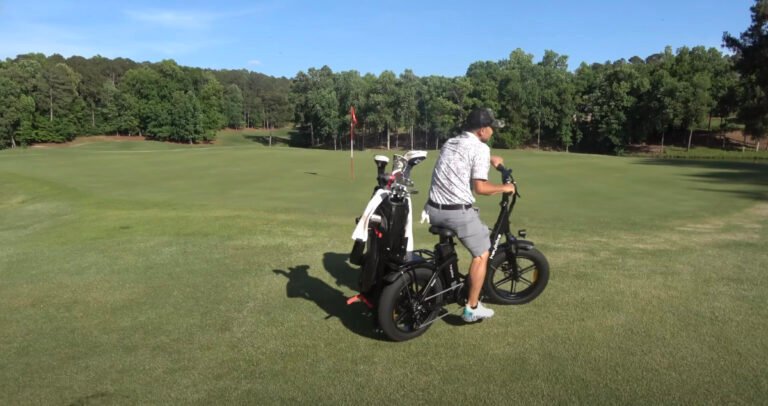Biking with Achilles Tendonitis: Tips and Advice for You
Biking is a popular form of exercise and transportation, but if you’re dealing with Achilles tendonitis, it can be challenging to continue cycling without making the injury worse. In this article, we’ll provide you with valuable tips and advice on how to bike safely with Achilles tendonitis. From the benefits of maintaining cardiovascular fitness during your Achilles rehab to exercises and tips for managing Achilles pain while cycling, we’ve got you covered.
Key Takeaways:
- Biking is a low-impact exercise that can help maintain cardiovascular fitness during Achilles tendonitis rehab.
- Start with short, easy cycling sessions and gradually increase intensity and duration.
- Other cardio exercises like swimming, stand-up paddleboarding, and kayaking can also be suitable for individuals with Achilles tendonitis.
- Ensure a proper bike fit to minimize discomfort, adjusting saddle height and avoiding shoes that press into the injured area.
- Strengthening exercises like calf raises and ankle dorsiflexion can provide stability and support while cycling with Achilles tendonitis.
Why You Should Maintain Exercise During Achilles Rehab
During Achilles rehab, it’s crucial to stay active and continue exercising for several reasons. First and foremost, maintaining cardiovascular fitness is essential for overall health and wellbeing. While you may not be able to engage in your regular running routine, there are alternative exercises that can help you preserve your fitness level. These exercises, such as swimming or using an elliptical machine, provide a low-impact workout that minimizes stress on the Achilles tendon.
Additionally, participating in other forms of exercise can help alleviate the boredom and frustration that can sometimes accompany Achilles rehab exercises. By incorporating activities like cycling or strength training into your routine, you can keep your workouts interesting and varied. This can also prevent mental burnout and keep you motivated throughout your rehab journey.
Finally, maintaining exercise during Achilles rehab can help preserve the strength of the muscles used for running. By engaging in exercises that target the calf muscles and surrounding areas, you can prevent muscle atrophy and ensure that your muscles are ready to support you once you’re able to resume running again. Strengthening exercises like calf raises and ankle dorsiflexion exercises can be particularly beneficial in this regard.
Why Maintaining Cardiovascular Fitness is Important During Achilles Rehab
Maintaining cardiovascular fitness during Achilles rehab is important for several reasons:
- Preserves overall health and wellbeing
- Minimizes stress on the Achilles tendon
- Alleviates boredom and frustration
- Prevents muscle atrophy
- Prepares muscles for running
“Staying active and continuing to exercise during Achilles rehab can have numerous benefits for your overall fitness and recovery.” – Dr. Sarah Johnson, Sports Medicine Specialist
Table: Recommended Cardio Exercises During Achilles Rehab
| Exercise | Description |
|---|---|
| Swimming | A low-impact exercise that provides a full-body workout without exerting pressure on the Achilles tendon. |
| Stationary Cycling | A low-impact alternative to outdoor cycling that helps maintain cardiovascular fitness while minimizing stress on the Achilles tendon. |
| Elliptical Machine | Simulates the motion of running without placing excessive strain on the Achilles tendon. |
Table: Recommended cardio exercises for maintaining fitness during Achilles rehab. These exercises offer a low-impact workout to preserve cardiovascular health and minimize stress on the healing Achilles tendon.
By maintaining exercise during Achilles rehab, you can preserve your cardiovascular fitness, alleviate boredom, and keep your muscles strong. Remember to consult with your healthcare professional before starting any new exercise routine and listen to your body to prevent any potential setbacks in your recovery.
Recommended Cardio Exercises for Cyclists with Achilles Tendonitis
Cycling is a fantastic way to maintain cardiovascular fitness, even if you have Achilles tendonitis. This low-impact exercise allows you to continue training while minimizing stress on your Achilles tendon. However, it’s important to start slowly and gradually increase intensity and duration to avoid aggravating the injury. In addition to cycling, there are other cardio exercises that can provide a great workout without putting excessive strain on your Achilles tendon.
Swimming
Swimming is an excellent alternative for cyclists with Achilles tendonitis. This full-body workout not only helps maintain cardiovascular fitness but also provides a low-impact environment that is gentle on the joints. Consider incorporating swimming sessions into your training routine to give your Achilles tendon a break while still staying active.
Stand-Up Paddleboarding and Kayaking
If you enjoy being out on the water, stand-up paddleboarding and kayaking are great choices for cardio exercise with Achilles tendonitis. These activities engage your upper body and core while providing a cardiovascular workout. Plus, they allow you to enjoy nature and beautiful scenery while getting your heart rate up.
Remember, always listen to your body and modify your activities as needed. If you experience increased pain or discomfort, it’s important to take a break and consult with a healthcare professional for guidance. By incorporating these recommended cardio exercises into your routine, you can continue to stay active and maintain your fitness level while managing Achilles tendonitis.
| Cardio Exercises for Cyclists with Achilles Tendonitis | Benefits |
|---|---|
| Swimming | – Provides a full-body workout – Low-impact on the joints – Maintains cardiovascular fitness |
| Stand-Up Paddleboarding and Kayaking | – Engages upper body and core muscles – Cardiovascular workout – Enjoyment of outdoor activity |
Tips for Cycling with Achilles Pain
If you’re dealing with Achilles pain while cycling, there are a few tips that can help you manage your discomfort and continue enjoying your rides. Proper bike fit is crucial for minimizing strain on your Achilles tendon. Be sure to adjust your saddle height to reduce tension and avoid cycling shoes that press into the injured area. Listening to your body is also essential. If you experience increased pain or discomfort, it’s important to take a break or decrease the intensity of your rides.
Another important consideration is your cycling technique. Avoid pedaling in a toe-down position, as this can put additional strain on your Achilles tendon. Instead, try to maintain a more neutral and fluid pedaling motion. Additionally, using lower gears and increasing your cadence can help reduce stress on the tendon.
It’s also worth mentioning that incorporating flexibility and strengthening exercises into your routine can aid in managing Achilles pain while cycling. Stretching your calf muscles before and after rides can help improve flexibility and alleviate tension on the tendon. Additionally, exercises such as toe raises and eccentric heel drops can help strengthen the muscles around the Achilles tendon, providing greater support and stability.
List of Tips for Cycling with Achilles Pain
- Ensure a proper bike fit to minimize strain on the Achilles tendon.
- Avoid cycling shoes that press into the injured area.
- Listen to your body and modify your cycling routine as needed.
- Opt for a neutral and fluid pedaling motion rather than toe-down pedaling.
- Use lower gears and increase your cadence to reduce stress on the tendon.
- Incorporate flexibility exercises, such as calf stretches, into your routine.
- Include strengthening exercises like toe raises and eccentric heel drops to provide greater support.
By following these tips and making necessary adjustments to your cycling routine, you can manage Achilles pain while still enjoying the benefits of cycling. Remember to consult with a healthcare professional if you have any concerns or if your pain persists.
| Tips for Cycling with Achilles Pain |
|---|
| Ensure a proper bike fit to minimize strain on the Achilles tendon. |
| Avoid cycling shoes that press into the injured area. |
| Listen to your body and modify your cycling routine as needed. |
| Opt for a neutral and fluid pedaling motion rather than toe-down pedaling. |
| Use lower gears and increase your cadence to reduce stress on the tendon. |
| Incorporate flexibility exercises, such as calf stretches, into your routine. |
| Include strengthening exercises like toe raises and eccentric heel drops to provide greater support. |
Exercises to Strengthen Muscles and Improve Stability while Biking with Achilles Tendonitis
If you’re dealing with Achilles tendonitis and still want to enjoy the benefits of biking, incorporating specific exercises into your routine can help strengthen the surrounding muscles and improve stability. These exercises should be done in addition to your Achilles rehab exercises and tailored to your individual needs and abilities. Here are some exercises that can be beneficial for biking with Achilles tendonitis:
1. Calf Raises
Calf raises are a great way to strengthen the calf muscles, which play a crucial role in biking. Stand on the edge of a step or a sturdy block with your heels hanging off the edge. Slowly raise your heels as high as you comfortably can, then lower them back down. Repeat this movement for several reps, gradually increasing the number of sets as you become stronger.
2. Ankle Dorsiflexion and Plantarflexion Exercises
Ankle dorsiflexion and plantarflexion exercises can help improve the flexibility and strength of your ankles, providing better stability while biking. To perform ankle dorsiflexion exercises, sit on the edge of a chair with your feet flat on the floor. Slowly lift your toes up towards your shins, then lower them back down. For ankle plantarflexion exercises, sit on the edge of a chair with your heels on the ground. Lift your heels as high as you comfortably can, then lower them back down. Repeat these exercises for several reps, gradually increasing the intensity as you progress.
3. Heel Drops
Heel drops can help strengthen the calf muscles and Achilles tendon. Stand on a step or a sturdy block with your heels hanging off the edge. Slowly lower your heels below the step, feeling a stretch in your calves, and then raise your heels back up. Repeat this movement for several reps, gradually increasing the difficulty by performing the exercise on one leg at a time.
Remember to start with light intensity and gradually increase the difficulty and duration of these exercises as your strength improves. It’s important to listen to your body and stop if you experience any pain or discomfort. Consulting with a healthcare professional or a physical therapist can provide you with personalized guidance and ensure you’re performing the exercises correctly.
| Exercise | Instructions |
|---|---|
| Calf Raises | Stand on the edge of a step or sturdy block. Slowly raise your heels as high as you comfortably can, then lower them back down. Repeat for several reps. |
| Ankle Dorsiflexion Exercises | Sit on the edge of a chair with your feet flat on the floor. Slowly lift your toes up towards your shins, then lower them back down. Repeat for several reps. |
| Ankle Plantarflexion Exercises | Sit on the edge of a chair with your heels on the ground. Lift your heels as high as you comfortably can, then lower them back down. Repeat for several reps. |
| Heel Drops | Stand on a step or sturdy block with your heels hanging off the edge. Slowly lower your heels below the step, then raise them back up. Repeat for several reps. |
Managing Achilles Tendonitis While Cycling: Prevention and Treatment
When it comes to managing Achilles tendonitis while cycling, prevention is key. By implementing a few simple strategies, you can reduce the risk of developing this painful condition and continue enjoying your rides. Start by maintaining a proper bike fit to ensure optimal support for your Achilles tendon. Adjust the saddle height to minimize strain on the tendon, and avoid cycling shoes that put pressure on the affected area.
Another important aspect of prevention is to prioritize stretching and warming up before each ride. This helps to improve circulation and flexibility in the Achilles tendon, reducing the likelihood of injury. Gradually increase the intensity and duration of your rides, allowing your body to adapt to the demands of cycling. By listening to your body and paying attention to any signs of pain or discomfort, you can make necessary adjustments to protect your Achilles tendon.
If you do experience Achilles tendonitis, it’s crucial to seek appropriate treatment to support your recovery. Rest is often the first line of defense, allowing the tendon to heal without further irritation. Applying ice to the affected area can help reduce inflammation and alleviate pain. Additionally, physical therapy exercises can help strengthen the muscles surrounding the Achilles tendon, providing greater stability and support during cycling. Your healthcare professional may also recommend anti-inflammatory medications to manage pain and reduce inflammation.
| Prevention Tips for Achilles Tendonitis in Cyclists | Treatment Options for Achilles Tendonitis in Cyclists |
|---|---|
|
|
By taking proactive steps to prevent Achilles tendonitis and seeking appropriate treatment when needed, you can effectively manage this condition while continuing to enjoy the benefits of cycling. Remember to consult with a healthcare professional for an accurate diagnosis and personalized treatment plan.
Conclusion
Biking with Achilles tendonitis is possible with the right precautions and exercises. By following the tips and advice provided in this article, you can continue enjoying the benefits of cycling while managing your Achilles tendonitis. Remember to listen to your body, consult with a healthcare professional if needed, and prioritize your recovery to ensure a safe and effective cycling experience.
Maintaining exercise during Achilles rehab is crucial for preserving cardiovascular fitness and the strength of the muscles used for running. Engaging in alternative exercises not only helps maintain fitness levels but also alleviates boredom and frustration during the rehab process.
Cycling is a low-impact exercise that is ideal for individuals with Achilles tendonitis. Starting with shorter and easier sessions, gradually increasing intensity and duration, and exploring other cardio exercises such as swimming, stand-up paddleboarding, and kayaking can provide a good cardiovascular workout without excessive strain on the Achilles tendon.
To minimize discomfort while cycling with Achilles pain, it’s important to ensure a proper bike fit. Adjusting the saddle height, avoiding cycling shoes that press into the injured area, and modifying your cycling routine based on your body’s signals are essential. Strengthening the muscles surrounding the Achilles tendon through exercises like calf raises, ankle dorsiflexion and plantarflexion exercises, and heel drops can also improve stability and support during cycling.
FAQ
Can I continue biking with Achilles tendonitis?
Yes, you can continue biking with Achilles tendonitis by taking certain precautions and following proper exercises.
What are the recommended cardio exercises for cyclists with Achilles tendonitis?
Apart from biking, swimming, stand-up paddleboarding, and kayaking are suitable cardio exercises for individuals with Achilles tendonitis.
How can I minimize discomfort while cycling with Achilles pain?
Ensure a proper bike fit, adjust the saddle height, avoid cycling shoes that press into the injured area, and listen to your body, modifying your routine as needed.
What exercises can I do to strengthen my muscles and improve stability while biking with Achilles tendonitis?
Recommended exercises include calf raises, ankle dorsiflexion and plantarflexion exercises, and heel drops, tailored to your specific needs and abilities.
How can I prevent Achilles tendonitis while cycling?
Maintain a proper bike fit, stretch and warm up before rides, gradually increase intensity and duration, and listen to your body for any signs of pain or discomfort.
What are the treatment options for Achilles tendonitis?
Treatment options may include rest, ice, physical therapy, and anti-inflammatory medications. Consultation with a healthcare professional is recommended.
Is it possible to bike with an Achilles tendon injury?
With the right precautions and exercises, it is possible to bike with an Achilles tendon injury. However, consult with a healthcare professional for personalized advice.
How can I manage Achilles tendonitis while cycling?
By following the tips and exercises provided in this article, you can manage Achilles tendonitis while enjoying the benefits of cycling.







